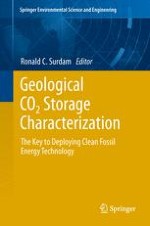2013 | OriginalPaper | Buchkapitel
12. The Carbon Management Institute’s Integrated CO2 Storage/EOR Strategy: the Advantages of Deploying Innovative, Multiple-Resource Development Strategies Designed to Foster Sustainability of Energy and Environmental Resources
verfasst von : Ronald C. Surdam, Ramsey D. Bentley, Zunsheng Jiao
Erschienen in: Geological CO2 Storage Characterization
Verlag: Springer New York
Aktivieren Sie unsere intelligente Suche, um passende Fachinhalte oder Patente zu finden.
Wählen Sie Textabschnitte aus um mit Künstlicher Intelligenz passenden Patente zu finden. powered by
Markieren Sie Textabschnitte, um KI-gestützt weitere passende Inhalte zu finden. powered by
Abstract
-
Coal resources and mines (vast coal reserves)
-
A significant source of water (groundwater produced during coalbed methane development)
-
Coal-to-chemicals plants capable of capturing CO2 (located at mine-mouth sites)
-
Nearby CO2 storage sites (depleted, Cretaceous compartmentalized gas fields)
-
Depleted oil fields suitable for enhanced oil recovery (significant amounts of stranded oil)
-
CO2 storage in these depleted oil fields (doubling the geologic CO2 storage capacity)
